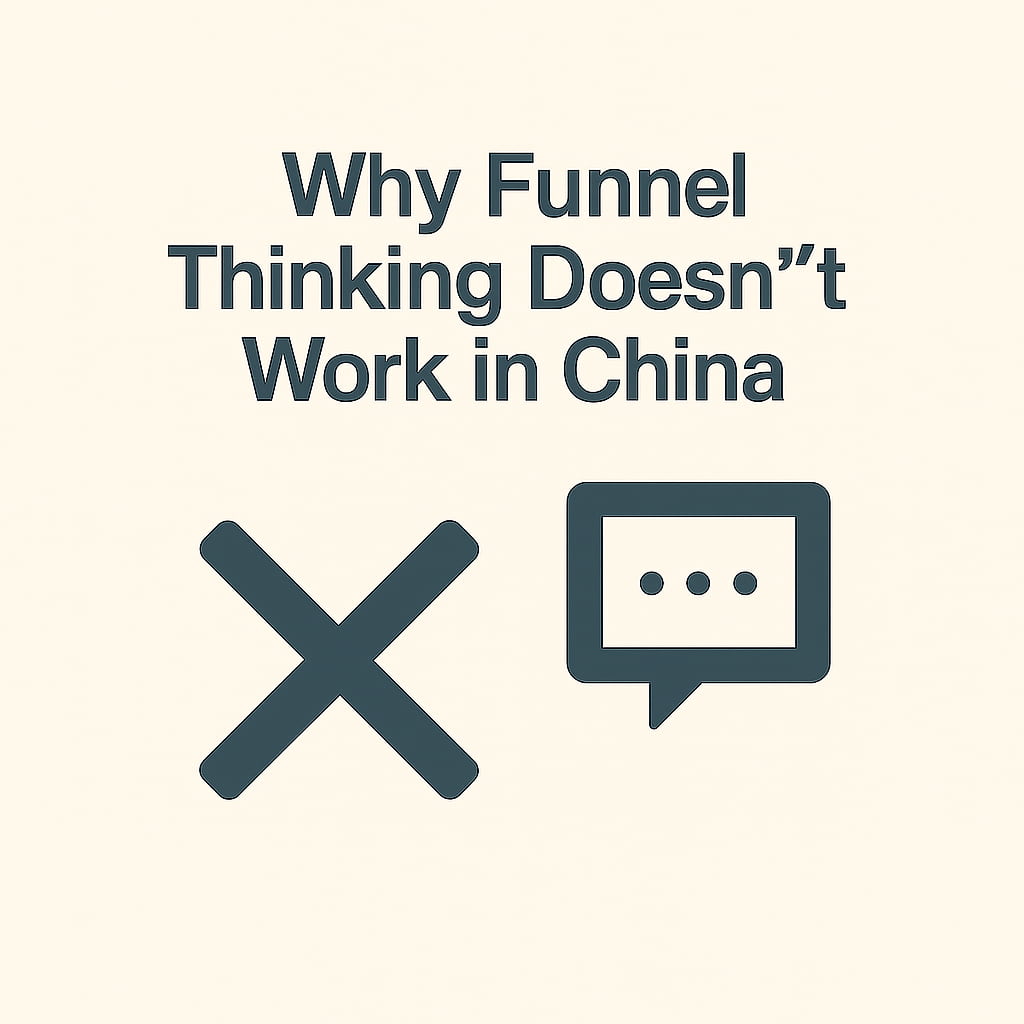Why Funnel Thinking Doesn’t Work in China
By The Olivia
Independent Content Strategist for the China Market
This post is part of the “Marketing in China” series. Click here to view the series introduction and why it was created.
The Funnel Logic That Works in the West Doesn’t Travel Well

In Western markets, the funnel is a staple framework for planning marketing activity.
Awareness → Interest → Decision → Action — a clean, linear path that lets teams allocate budgets stage by stage and predict outcomes.
But once brands apply this model to China, the neat sequence starts to break.
Budgets are spent, content is produced, yet user behaviour refuses to move in the same straight line.
Platform Ecosystems Break the Linear Path
In China, platforms don’t connect in a single flow — they operate as parallel systems.
WeChat, Douyin, Rednote, Taobao, and JD each contain their own logic of attention and conversion.
A user might see a recommendation in WeChat, never leave the app,
or see a short video on Douyin and complete the purchase elsewhere.
These cross-platform loops are now normal.
【Tencent 2023 ESG Report】noted that WeChat Mini Programs generated over RMB 1.5 trillion in annual GMV,
showing how engagement and transactions happen entirely within the ecosystem.
In such an environment, any funnel a brand tries to map is likely to fragment mid-way.
Decision-Making Looks More Like a Web
In Western markets, users often move through the funnel stage by stage.
In China, their journey jumps across spaces:
- checking peer reviews on Rednote,
- browsing Douyin videos or livestreams,
- and finally completing purchases on Taobao or JD.
This isn’t an anomaly — it’s how the system functions.
Douyin’s e-commerce GMV reached USD 509 billion in 2024 【ECDB】,
illustrating how discovery and purchase can coexist within a single content environment.
Search and Recommendations Intertwine
Chinese users rely on both search and algorithmic discovery.
According to Rednote’s mid-2024 report 【Jing Daily】, about 70% of users use internal search before a decision —
making it a validation step, not just the top of the funnel.
At the same time, recommendation engines like Douyin’s can trigger instant action,
bypassing all the “nurturing stages” that traditional funnels assume.
The result: intent doesn’t build gradually; it accelerates when context feels right.
Observation
Many global brands still enter China with a funnel mindset —
separating ads, content, and search as if users will move through fixed stages.
But in China, attention is discontinuous.
Users jump, loop, and cross between systems,
and any plan that assumes linear progression ends up losing connection mid-journey.
The more useful mindset is to recognise how these layers interlock —
how discovery, validation, and action coexist in the same spaces.
Relevance here depends less on sequence than on presence and timing.
Closing Thoughts
In China, user journeys resemble a web, not a line.
Success comes from reading the structure of the system,
understanding how each platform holds attention in its own way,
and showing up with consistency — not in order, but in rhythm.
The funnel hasn’t disappeared; it’s just been rewired.
And the brands that adapt fastest are usually the ones that stop forcing it to stay straight.
← Back to All Articles
← Learn more about my services
You May Also Like:
Why Strategy Often Gets Squeezed Out of Execution
Why strategy often disappears during execution—and how this plays out faster in China’s marketing environment.
Ready to take your content further?
Let’s build a strategy that resonates in the Chinese market.
THE OLIVIA WAY
© 2025 THE OLIVIA WAY. All rights reserved.
